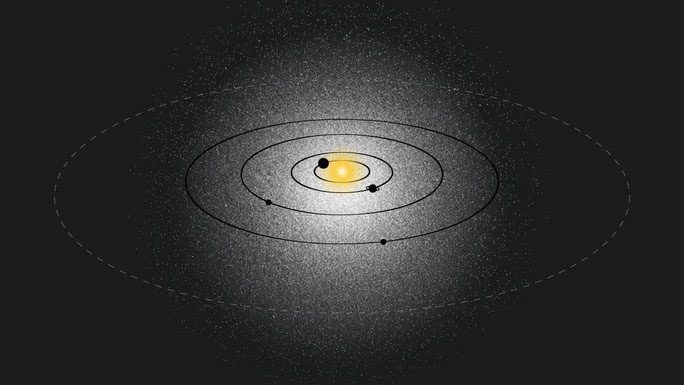The “light ghost” resembles a thick, dimly glowing shell that envelops the Solar System, invisible to older telescopes but faintly visible to the eyes of the Hubble Space Telescope.
Searching through a data set of over 200,000 images captured by NASA’s Hubble Space Telescope and conducting tens of thousands of measurements, scientists have identified something startling: A mysterious sheet of light, possibly like a bubble, is consuming the entire Solar System.
According to SciTech Daily, this is a faint and eerie layer of light—similar to walking into a pitch-black room and seeing the walls emitting a dim glow.

The “light ghost” enveloping the Solar System may be a thick dust shell – (Photo: NASA/ESA/STScI).
The research was conducted by a team of scientists led by the Space Telescope Science Institute, which operates several NASA space telescope missions, including Hubble, James Webb, and Nancy Grace Roman. They concluded that this could be a dust shell surrounding the Solar System, thick enough to extend all the way to Pluto.
The light within this layer is distributed very smoothly, with common light sources such as other stars, galaxies, and planets having been eliminated. This leads to an intriguing origin: Outgassing from icy comets drifting freely in these regions, partially sublimated by the heat from the Sun.
This light level is very low, which NASA describes as akin to watching 10 fireflies glowing across the sky.
Scientists are working to validate this hypothesis. If confirmed, this dust shell would be an interesting additional structure to the Solar System model.
This idea is bolstered by a 2021 discovery by New Horizons, NASA’s Pluto exploration spacecraft. After completing its initial goals, it continued to fly outwards and discovered a faint, ghostly luminous region when looking into the interstellar space ahead.
Research on this “light ghost” has recently been published in two scientific journals, The Astronomical Journal and The Astrophysical Journal Letters.





















































